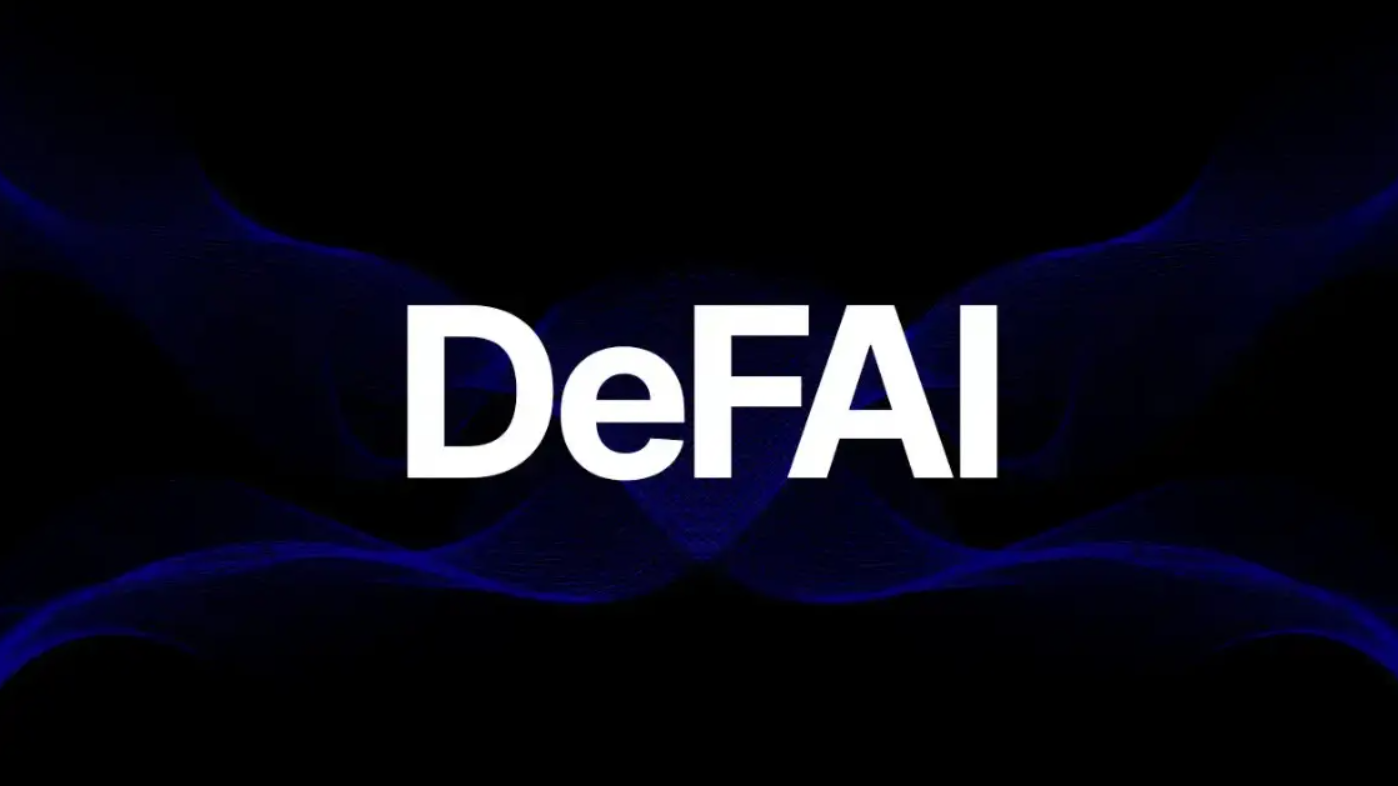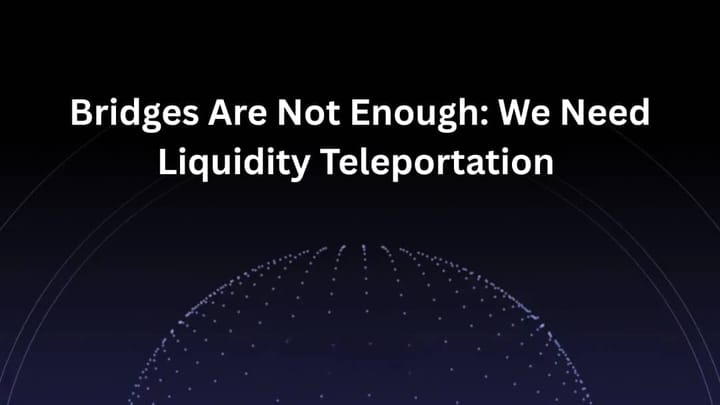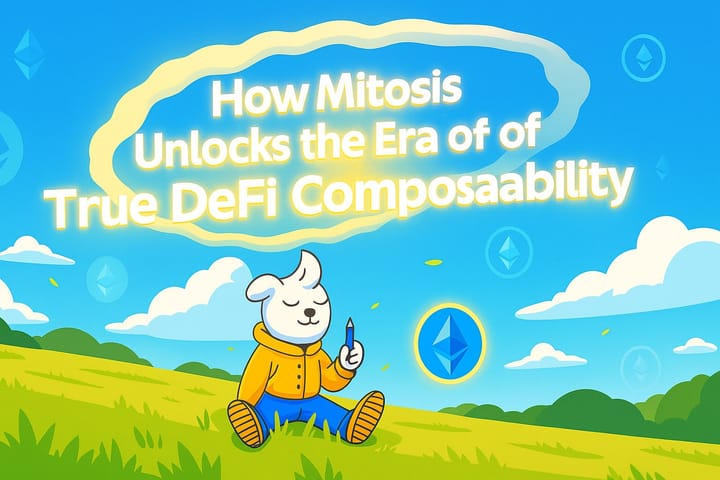An exploration of DeFAI: whether AI can simplify personal DeFi usage and help 'lazy degens' automate their strategies.

DeFAI stands for Decentralized Finance + Artificial Intelligence. It’s an emerging concept where AI is built directly into DeFi systems to automate and simplify finance. You can think of it as “lazy finance”: instead of doing all your own research and trades, you get an AI assistant to do it for you. DeFAI apps use AI and machine learning to handle complex on-chain tasks, making crypto investing feel a bit more like using a smart personal finance tool.
What is DeFAI?
At its core, DeFAI uses AI to make DeFi user-friendly and automated. This ranges from natural-language interfaces to algorithmic decision-making. For example, a user might simply tell the system “move $10,000 into a diversified yield strategy” in plain English. The DeFAI agent would then analyze the market and execute the optimal trades on-chain, all automatically. According to ChainCatcher, DeFAI allows people to perform complex DeFi operations with simple, human-like commands, without needing deep crypto expertise. Unlike traditional trading bots, DeFAI uses advanced AI (often large language models or neural nets) to adapt and personalize strategies rather than just follow fixed rules.
In practice, many DeFAI platforms today offer features like:
- Automated trading and rebalancing: The AI constantly monitors prices and portfolio allocations, and it can execute trades or rebalance assets across chains without manual input.
- Yield optimization: By analyzing on-chain data and market trends, AI agents decide which liquidity pools or lending markets give the best returns. A user’s funds can be moved automatically to where the algorithms predict the highest yield.
- Risk management: AI can watch for anomalies or security threats, flagging suspicious transactions. It can also adjust strategies in volatile markets (for example, hedging or pulling out when risk spikes).
- Customized portfolios: AI can learn a user’s risk tolerance and financial goals, then tailor the asset mix accordingly. It’s like having a robo-advisor that trades crypto.
Major players in this space include projects like Griffain (an AI-driven yield optimizer), Orbit (AI-enhanced cross-chain liquidity management), and Neur (AI-based trading tools on Solana). These platforms highlight what DeFAI can do: Griffain uses machine learning for portfolio management and real-time data analysis, Orbit taps into 200+ chains for smart liquidity, and Neur offers Solana-specific AI trading strategies. Mitosis notes that these services represent “a fundamental shift” in DeFi, automating everything from smart contract interactions to personalized financial advice.
Here’s a visual to set the scene: imagine an AI “agent” sitting between you and DeFi protocols. You enter a command or a goal, and the agent analyses blockchain data, market trends, even news/sentiment, then automatically executes the necessary transactions on your behalf. The figure below symbolically illustrates this fusion of AI and blockchain (the colorful AI-brain image with crypto symbols):
Figure: DeFAI blurs the line between AI and blockchain – AI analyzes data and executes crypto trades for you (Source: OSL)
Why it matters (and how it helps newbies)
DeFAI promises several benefits for new crypto users:
- Ease of use: Newcomers often find DeFi daunting (multiple chains, wallets, protocols). With DeFAI, they can give simple instructions. This is like talking to a chatbot instead of coding transactions. ChainCatcher notes that DeFAI “bridges the gap between crypto natives and newcomers” by mimicking familiar interfaces.
- Time-saving & automation: Managing a portfolio 24/7 is tough. AI can run trades around the clock, seizing opportunities that a human might miss. It can keep your investments balanced with minimal effort on your part.
- Improved decisions: AI can analyze huge datasets (historical prices, on-chain metrics, social trends) in real time. It may catch patterns or arbitragte inefficiencies faster than manual traders. This could lead to better returns if the models work well.
- Accessibility: By simplifying interfaces and automating complexity, DeFAI lowers the barrier to entry. Even someone with no crypto knowledge could, in theory, use an AI-powered app to invest. Mitosis points out that AI-driven “Agentic Funds” can adjust to user goals, making DeFi accessible to non-experts.
- Integrated risk controls: Some DeFAI projects use AI for fraud detection or compliance, adding safety features under the hood.
The Nansen research summary highlights the promise: AI-powered DeFi can provide “smart contract integration,” “advanced analytics for better investment,” and “personalized financial services”. In practice, this means DeFAI apps could automatically execute smart contracts at optimal times, give you tailored portfolio tips, and save you from manually hunting yields on every chain.
Existing tools & platforms
Several DeFAI tools are already out there or in development. We mentioned Griffain, Orbit, and Neur. Others include HeyAnon, which even uses ChatGPT-like interfaces to let users trade by chat commands, and protocols using GPT-4 for yield farming. Mitosis’s own Matrix Vaults can be AI-driven: one article describes AI agents that continuously rebalance funds across chains for maximum yield. These implementations show real outcomes: AI can pick where to stake liquidity or when to shift assets, all based on data.
In practice, a user might see something like:
- “Smart DeFi Portfolio”: a dashboard where an AI suggests a portfolio and you tap ‘confirm’ to let it rebalance automatically.
- “Yield Optimizer”: you deposit stablecoins, and the AI keeps them in whichever liquidity pool is highest-paying that day.
- “Risk Monitor”: the AI alerts you if a position’s TVL is dropping or a known exploit is active, and may auto-hedge your funds.
All of these are examples of “passive investing” in crypto – you give AI your goals or funds, and it takes care of trades. The term “Lazy Finance” is sometimes used: you’re doing the work of picking a strategy one time, and the AI does the rest.
Trade-offs and risks
However, DeFAI isn’t a magic bullet. There are important downsides to consider:
- Less Control: By definition, you’re handing decision-making to an algorithm. If you don’t understand what the AI is doing, you may not be able to intervene in time. This can be scary if the market moves against your position. Mitosis warns that while AI can guide decisions, “users still need to conduct their own research.”. In other words, don’t blindly trust the robot.
- Black-box & Transparency Issues: AI models (especially advanced ones) can be opaque. You might not know why the AI recommended a move. This “black box” problem raises trust issues: if an AI agent cheats or fails, how do you verify or audit it? Mitosis notes transparency and fairness are big challenges in AI-deFi.
- Data Bias & Errors: AI is only as good as its data and models. If an AI is trained on flawed data, or if there’s an unforeseen market regime, it can make catastrophic mistakes. Overfitting is a risk: a model might do great on past data but fail in a new market. Unlike human judgment, an AI doesn’t know “common sense,” and could amplify errors.
- Security & New Vulnerabilities: Integrating AI can introduce new attack surfaces. For instance, if an AI pulls in data from the internet, it could be fed bad signals. Or, malicious actors might try to trick the AI with fake data. Also, using AI in smart contracts could increase gas costs or complexity.
- Centralization Temptation: Some DeFAI services rely on centralized servers or oracles to run the AI. This could reintroduce central points of failure or trust, somewhat against the decentralized ethos.
- Over-Reliance: If everyone uses similar DeFAI strategies, markets could become more correlated and volatile when those strategies hit the same signals.
Because of these issues, experts urge caution. Mitosis’s AI & DeFi article emphasizes concerns about transparency, scalability, and ethics. For example, if an AI system has a bug, it could suffer a major loss (imagine an automated portfolio unexpectedly liquidating). Users should treat AI like a powerful tool but not put 100% faith in it without oversight.
The future and outlook
Despite the risks, the DeFAI trend is gaining traction. Mitosis cites projections of a $1.3 billion DeFAI market by 2025. AI-driven crypto wallets, bots, and protocols continue to launch. We already see signs: many traders follow “AI-driven strategies” chatter, and even major firms are exploring ML models for on-chain analytics.
For new users, DeFAI (or “lazy finance”) can be a helpful introduction. It abstracts away the nitty-gritty: your crypto life can be more about setting goals and checking outcomes than about constant manual maneuvers. Tools like AI portfolio managers or goal-based investing apps will likely proliferate, making DeFi less intimidating.
However, education remains key. Newcomers should learn enough to validate the AI’s moves. Think of it like autopilot in an airplane: you enjoy the ride, but you still keep hands near the controls and monitor gauges. Use DeFAI to leverage expertise, but stay aware of what you’re investing in.
In summary, DeFAI blends the ease of passive, automated investing with the innovation of Web3. It promises to make DeFi more “user-friendly and efficient”.



Comments ()